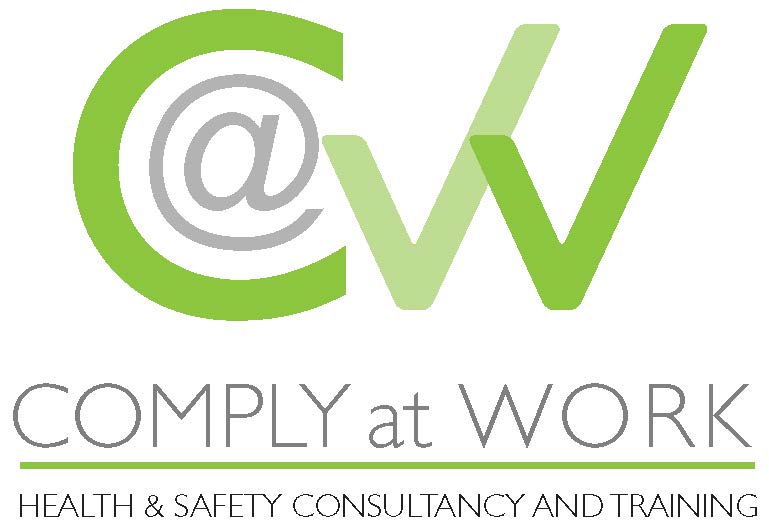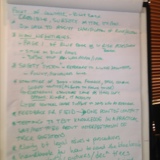Information
-
Audit Title
-
Document No.
-
Client / Site
-
Conducted on
-
Prepared by
-
Location
-
Personnel
3.0 Scope
-
Is this FPE applied to all confined spaces on premises operated by the Group Company?<br>Documents: <br>Scope of documents developed to implement this FPE. <br>Included in contracts for services providers who may enter confined spaces
-
Is this FPE applied to confined spaces at other locations which may be entered by a Group Company Employee?<br>Documents: <br>Instruction/rules issued to Group Company employees when working offsite.
4.0 Accountability
-
Is there a process in place for formally appointing a person or persons other than CEO to be accountable to implement and maintain each requirement.<br><br>Documents: <br>As a minimum the accountability section of the FPE has been completed showing the appointed person. <br>As a minimum there must be a filed copy of the FPE with appointed persons column completed.
-
Has a person or persons other than the CEO been assigned accountability for implementing and maintaining each requirement of this FPE?
4.1 Hazard identification risk assessment and control
4.1.1
-
Has a survey been undertaken to identify all confined spaces and restricted spaces which are present on the operation?
-
Does the survey record the location, structure and or facility in which the confined space is located?
-
Does the survey describe the hazards that may be present in the confined space?
-
Is there a specification for confined space signage?
-
Is it a requirement that each entry point to a confined space has signage specifying the requirements for an entry permit?
-
Are the terms and definitions of a confined and restricted space clear in the documents?
4.1.2
-
Are risk assessments required to be undertaken before a confined space entry permit is issued?
-
Does the risk assessment process require the identification of air quality hazards?
-
Does the risk assessment process require the identification of engulfment/burial hazards?
-
Does the risk assessment process require the identification of temperature extremes?
-
Does the risk assessment process require isolation to control contaminants and energy sources?
-
Does the risk assessment process require the consideration of natural or forced ventilation?
-
Does the risk assessment process require the consideration of the need to use respirators and or breathing apparatus?
-
Does the risk assessment process require the consideration of access/egress considerations? I.e. how easy/difficult is it for people to enter/exit. Can a rescue team with full gear get in the hole or get someone out on a stretcher?
-
Does the risk assessment process require the development of rescue plans and the provision of rescue equipment?
-
Does the risk assessment process require the presence of a standby person at the entrance to a confined space?
4.1.3
-
Are activity based hazards, i.e. the tasks/jobs undertaken while in the confined space, subject to a safe work procedure or task analysis?
-
Does the task analysis address the requirements of this section of the FPE?<br>• Proposed work activities. <br>• Equipment to be used. <br>• Energy sources to be introduced into the confined space. <br>• Potential for generation of contaminants which can be created through the method of work. <br>• Requirement for other safety equipment and PPE. <br>• Other hazards which may be present. <br>
4.1.4
-
Is there a process which requires Safe Work Procedures to be developed for activities which become more hazardous when carries out inside a confined space?
-
Does the process identify those activities for which a safe work procedure must be followed when inside a confided space?
-
Does the procedure include the activities listed in this section of the FPE?
4.1.5
-
Is there a process in place to review confined space entry surveys every 5 years and every confined space risk assessment every 12 months?<br>Documents: <br>□ Procedural requirement. <br>□ Schedule for review. <br>□ CSE Survey and risk assessment records 12 months and older.
4.1.6
-
Are the circumstances at which a restricted space becomes a confined space clearly identified in documentation?<br>Documents: <br>□ Confined and restricted space survey and hazard identification. <br>□ Analysis of survey to describe conditions when transition can occur <br>□ Confined space training documents
4.2 Selection, Training, Competency and Authorisation
4.2.1
-
Has medical fitness and health selection criteria for working in a confined space been identified? <br>Documents: <br>□ Fitness and Health Criteria.
-
Does it meet the suggested criteria in the guideline
-
Is there a process to check that personnel who will work in a confined space meet these criteria?<br>Documents: <br>□ Process to check compliance with criteria. <br>□ Records of medical assessment.
4.2.2
-
Is there a training and competency assessment system for confined space in place? <br>Documents: <br>□ Defined Competency Standards. <br>□ Confined Space Entry Competency & Assessment Documentation. <br>□ Training Schedule. <br>□ Training and Assessment Records
-
Does the training and competency program include practical and theoretical examinations?
-
Are training and assessment records kept?
4.2.3
-
For personnel who issue permits does their training include the requirements of this section of the FPE.<br>• Instruction on the hazards of confined spaces; <br>• Instruction on the requirements contained in the confined space entry process; <br>• Roles and responsibilities of the confined space entry permit issuer; <br>• Familiarization with emergency response procedures, and <br>• Training in the operation of gas detection equipment. <br><br>Documents: <br>□ Training Records for authorizing personnel. <br>□ Confined Space permit authorizer training materials and program. <br>
4.2.4
-
Does the training program include the requirements of this section of the FPE? <br>• Instruction on the hazards of confined spaces; <br>• Instruction on the content and purpose of the confined space entry permit; <br>• Familiarity with the relevant safe working procedures; <br>• Understanding the emergency response procedures, and <br>• Role and responsibilities of the standby person <br><br>Documents: <br>□ Confined space training program. <br>□ Confined space Safe working procedures. <br>□ Confined space emergency response procedures. <br>□ Standby person training program. <br>□ Standby person roles and responsibilities document.
4.2.5
-
Are rescue personnel specifically trained in confined space rescues for each confined space?<br>Documents: <br>□ Rescue plans for each confined space including equipment requirements. <br>□ Rescue team drills and drill program. <br>□ Standby person training material. <br>□ CSE Procedures.
-
Is there a rescue and equipment plan for each Confined space?
-
Is the standby person trained? Are the duty/requirements of the standby person clearly outlined in both training and procedures?
4.3 Communication and awareness
4.3.1
-
Are confined spaces required to be identified with a sign at the entry points? <br><br>Documents: <br>□ Standard for confined space signage. <br>□ Confined space signs
-
Do the signs indicate a permit is required before entry?
-
Are the signs in the local language and English?
4.3.2
-
Are awareness information and or instructions provided on a regular basis to personnel who may perform work in a confined space?
-
Do the topics covered include the four items listed in the is section of the FPE?<br>• Definition of a confined space. <br>• Hazards presented by confined spaces. <br>• Permitting requirements for confined space entry. <br>• Confined space entry equipment and procedures. <br><br>Documents: <br>□ Confined space awareness documentation. <br>□ Confined space instruction materials. <br>□ Schedule for instruction/awareness. <br>□ Minutes of toolbox talks / meetings. <br>□ Task Instructions.<br>
4.3.3
-
Is there a change management process in place?<br><br>Documents: <br>□ Management of changes procedure. <br>□ Records of change management being applied to a change in a confined space. <br>□ Updated rescue plans. <br>□ Toolbox talk/ meeting attendance records. <br>□ Updated CS safe work procedures.
-
Is the change management process applied to changes in confined spaces?
-
Is there a process to identify new confined spaces and to ensure entry requirements are documented, recue plans are updated, the confined space is sign posted as required and personnel are informed?
4.4 Design, Purchase, Fabrication, Installation and Commissioning
4.4.1
-
Is there a process in place to review designs for the creation and or existence of confined spaces?<br>Documents: <br>□ Design review procedures. <br>□ Criteria for getting rescue team member sin and stretchers outs. <br>□ Documented revisions of plant designs to eliminate or adjust confined spaces
-
Does this process require where possible their elimination?
-
Where confined spaces cannot be eliminated does this process consider changes to the design which will make it safer for people to enter and easier for rescue teams should rescue be necessary?
4.4.2
-
Are purchasing specifications available for SCE equipment required in this section of the FPE?
-
Is equipment purchased in accordance with the purchasing specifications? <br>• Ventilation equipment. <br>• Monitoring equipment (air quality or gas detection). <br>• Breathing apparatus. <br>• Rescue equipment.
4.4.3
-
Are the duty and work environment of extraction systems, required to be understood and specifications formulated to ensure this equipment is capable of withstanding likely operating conditions? <br>Documents: <br>□ Document identifying the likely atmospheres in each confined space. <br>□ Specifications for extraction/ventilation equipment
4.5 Work method and condition control
4.5.1
-
Is there a requirement for all confined space entry to be authorised by the use of a confined space entry permit?
-
Does the confined space entry permit record the requirements of this section of the FPE?<br><br>• Risk assessment of work to be undertaken in the confined space. <br>• Identification of isolations required before entry. <br>• Recording of initial air quality - gas analysis and recommendations for ongoing monitoring. <br>• List of equipment permitted within the confined space including safety equipment required. <br>• Name of standby person (sentry) who will remain outside the confined space. <br>• Record of persons within the confined space at any particular time.
-
Where are permits filed after the task?
4.5.2
-
Is there a process in place to test the atmosphere inside a confined space prior to entry? <br><br>Documents: <br>□ Atmospheric testing procedures. <br>□ Copy of local regulations on personal exposure levels. <br>□ EU or equivalent standards for occupational exposure levels.
-
Are the upper and lower limits for oxygen and other contaminants defined in this process?
-
Are exposure levels for contaminants defined?
4.5.3
-
Is there a specification for lighting and ventilation inside a confined space? <br>Documents: <br>□ Holcim engineering standards. <br>□ Local legislative/regulatory requirements. <br>□ Lighting and ventilation specifications for CS.
4.5.4
-
Is there a specific approval process in place to allow entry to a confined space without atmospheric testing?
4.6 Maintenance
4.6.1
-
Is there a process in place to calibrate and maintain gas detection equipment according to the manufacturer’s specifications? <br><br>Documents: <br>□ Calibration, testing and maintenance procedure for gas testing equipment. <br>□ Maintenance Schedules. <br>□ Maintenance / Repair Records. <br>□ Equipment manufacturer’s specifications. <br>□ Compressed air sampling and testing protocol
-
Is gas testing equipment required to be tested prior to analysis of air in a confided space?
-
Is there a process in place to test the air supplied by a compressor prior to entry of a confined space?
4.6.2
-
Is all protection, rescue, ventilation and other safety equipment used for confined space entry included in a maintenance program?<br><br>Documents: <br>□ Maintenance program which specifically includes this equipment. <br>□ Maintenance records. <br>□ Manufactures parts books/lists. <br>□ Manufactures maintenance specifications.
-
Does the Maintenance program comply with the requirements of this section of the FPE? <br>
4.7 Emergency control
4.7.1
-
Is there a rescue plan in place for each confined space entry? <br><br>Documents: <br>□ Rescue Plans to match each confined space.
-
Is appropriate rescue equipment available?<br><br>Documents: <br>□ Rescue equipment requirements for each confined space.
-
Is there a process to check its availability
4.7.2
-
Is the likely emergency response scenarios documented and suitable emergency response equipment available for each scenario?<br><br>Documents: <br>□ Documented scenarios. <br>□ List of emergency response equipment required to be available for each scenario.
4.7.3
-
Are emergency response personnel trained in confined space rescue? Check for ERT training program and Confined Space Rescue <br>
-
Are drills conducted for rescues from specific confined spaces?
4.8 Monitoring, inspection and audits
4.8.1
-
Is an auditing program in place, which incorporates these element requirements? Check for Audit Schedule and Audit Reports.
4.8.2
-
Is an inspection program in place for all ventilation and CSE equipment? Check for Inspection Schedule, Inspection Checklists, Inspection Records and Manufacturer Inspection Recommendations.
4.8.3
-
Is there a task observation process in place? Check for Task Observation procedure, Observation Schedule, Task Observation Records, CSE Permits to match Task Observation records.
-
Does the task observation program direct personnel to conduct task observations on the requirements of this section of the FPE? <br>• Permit issuing procedures. <br>• Gas testing procedures. <br>• Relevant safe working procedures. <br>• Status of the rescue plan and equipment.<br><br>Documents: <br>□ Task Observation procedure. <br>□ Observation Schedule. <br>□ Task Observation Records. <br>□ CSE Permits to match Task Observation records. <br>□ Rescue Plans.
4.9 Reporting, assessment and corrective actions
4.9.1
-
Is there a process in place to assess, correct and report on confined space hazards? Check for Hazard reporting procedure and Hazard Reports
-
Does the process require unsafe equipment and or work practices are stopped immediately?
-
Does the process require the recording of corrective actions? Check for Corrective Action Reports.
Conclusion and auditor's comments
-
Date of audit completed
-
Signature of auditor
-
Date of auditor's signature
-
Signature of auditee
-
Date of auditee's signature


















